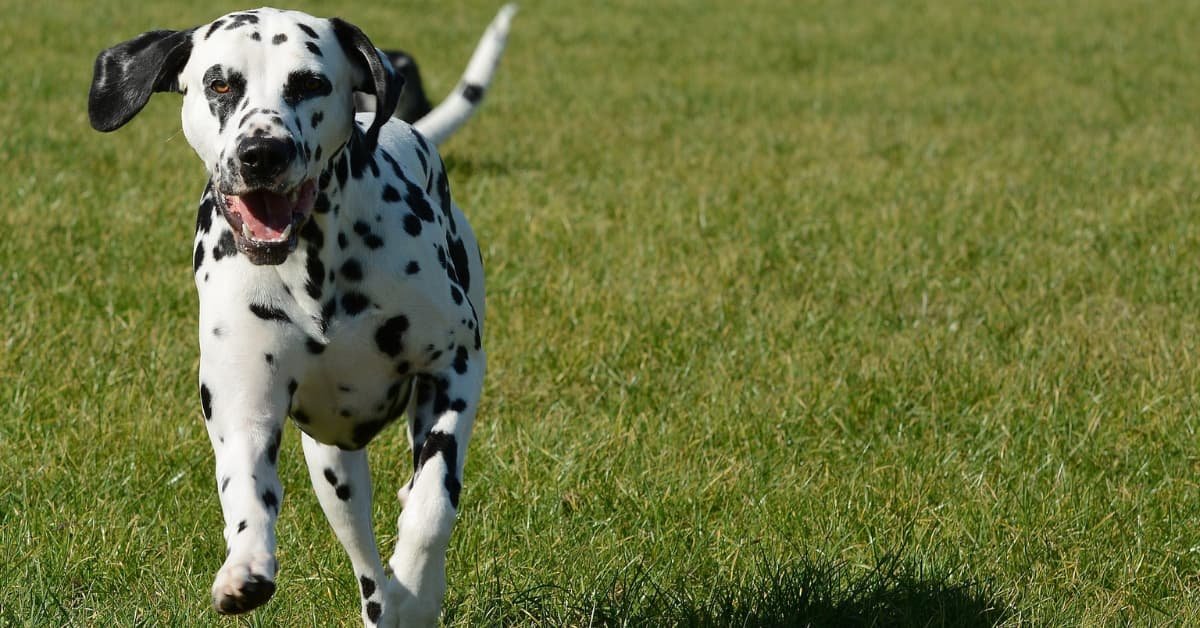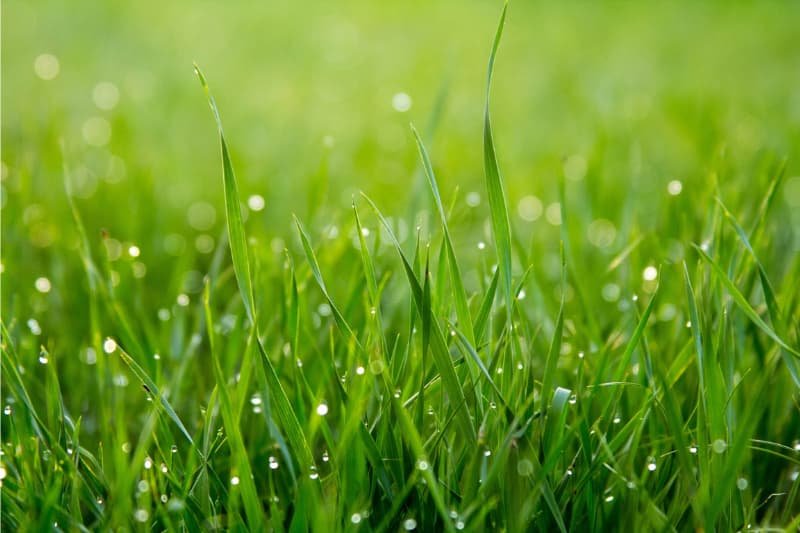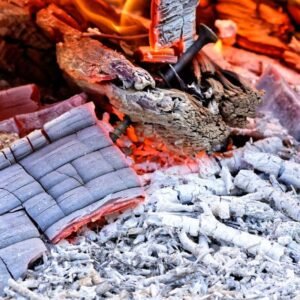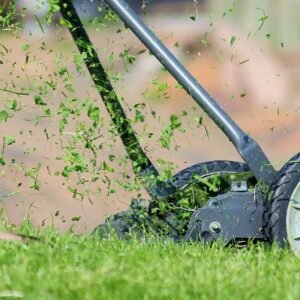
As a dog owner, I know firsthand the joys and challenges of creating a backyard space that is both safe and beautiful for our furry friends.
From brown spots on the grass to chewed-up plants and fleas, there are a variety of issues that can arise when trying to create a dog-friendly yard.
But just like we train our dogs to behave in the house, we can also train them to respect and enjoy a designated outdoor space.
In this article, we will explore the best grass for dogs, alternatives to grass, safe ground cover options, pet-friendly plants, and lawn maintenance and care tips.
Short Summary
- Choose dog-friendly grasses such as Bermuda grass, zoysia grass, and buffalo grass to avoid issues like brown spots and stains caused by dog urine.
- Train dogs to use a specific area of the lawn as their bathroom to reduce upkeep and maintenance.
- Use safe ground covers like silver carpet, Irish moss, and elfin thyme for smaller backyard areas or between stepping stones.
- Ensure plants, flowers, and lawn products are safe for dogs and avoid toxic options. Use natural and non-toxic weed killers like Natural Elements Weed Killer or ECO Garden Pro.
Best Grass Options

We’ve researched and found that Bermuda grass, zoysia grass, and buffalo grass are like a protective blanket for our furry friends.
They provide a lush and durable surface that can withstand wear and tear while remaining safe and healthy for our pups to play on.
These drought-resistant grasses are perfect for areas with high traffic and can handle the heavy foot traffic of our pups playing and running around.
Bermuda grass is a warm-season grass that’s known for its drought resistance and can tolerate heavy traffic.
Zoysia grass is a low-maintenance grass that can handle both drought and heavy traffic, making it perfect for our pup’s play area.
Buffalo grass is a native grass that requires less water and can handle both drought and high-traffic areas.
Grass varieties for high-traffic areas must be able to withstand the constant running, jumping, and playing of our furry friends.
These grasses need to be durable and tough while maintaining a beautiful and healthy appearance.
Bermuda grass, zoysia grass, and buffalo grass are the perfect grass varieties for high-traffic areas in our pup-grade yards.
Not only do they provide a lush and durable surface for our pups to play on, but they also require less water and maintenance compared to other grass varieties.
With these grass options, we can create a safe and beautiful space for our dogs to play and enjoy in our backyard.
Alternatives to Grass
Let’s explore different options for ground cover in our yard that are suitable for our furry friends.
While grass is a popular choice for yards, there are non-traditional yard surfaces that can be just as effective.
One option is mulch, which is easy to maintain, affordable, and provides good drainage.
It’s also soft on paws and can reduce the amount of dirt and mud that dogs track into the house.
However, it’s important to choose a type of mulch that’s safe for dogs, as some varieties can be toxic if ingested.
Another option for dog-friendly landscaping is synthetic turf or artificial grass.
This surface is durable, low maintenance, and can withstand heavy foot traffic from dogs. It also eliminates the need for mowing, fertilizing, and watering.
However, it’s important to choose high-quality artificial grass that’s free from harmful chemicals and heavy metals.
Additionally, it can be expensive to install and may not be as environmentally friendly as other options.
Ultimately, the best option for your yard will depend on your specific needs and preferences.
Safe Ground Cover
When it comes to choosing a ground cover that is both functional and aesthetically pleasing, there are many options available that can provide an appealing landscape.
Some popular ground cover options for dog-friendly yards include mulch, stone, synthetic turf, clover, wood chips, and even dirt.
Each option has its pros and cons, and it’s important to consider these factors before making a decision.
Mulch is a cost-effective and easy-to-install option that can help keep weeds at bay and retain moisture in the soil.
However, it can also attract insects and may need to be replaced every few years.
Stone is a durable and low-maintenance option that can provide a modern look to your yard, but it can also be costly and may not be comfortable for dogs to walk on.
Synthetic turf can provide a lush and green look to your yard without the maintenance of natural grass, but it can also be expensive and may require regular cleaning.
Clover, wood chips, and dirt can also be viable options, but they may require more upkeep and may not be as visually appealing as other options.
With careful consideration of the pros and cons, you can choose the best ground cover for your dog-friendly yard.
If you’re considering a DIY ground cover installation, it’s important to follow some tips to ensure the best results.
First, prepare the area by removing any existing grass or weeds and leveling the ground.
Then, lay down a weed barrier to prevent weed growth.
Next, install the ground cover of your choice, ensuring that it’s installed evenly and securely.
Finally, add any finishing touches such as edging or bordering to give your yard a polished look.
By following these tips and considering the cost and pros and cons of different ground cover options, you can create a beautiful and safe space for your furry friend to enjoy.
Pet-Friendly Plants
To ensure our furry friends stay healthy and safe, it’s important to choose the right plants for our yard.
While plants can provide numerous benefits such as improving air quality and reducing stress levels, some can be dangerous to our pets if ingested.
Examples of harmful plants include lilies, azaleas, and oleanders, which can cause vomiting, diarrhea, and even death in dogs.
It’s essential to research and identify pet-friendly plants before adding them to our garden design.
Incorporating plants into a dog-friendly garden design can be a challenge but also a rewarding experience.
One tip is to create a designated area for plants away from high-traffic areas where dogs like to play and run.
Using raised beds or containers can also help prevent dogs from accidentally trampling or eating plants.
Additionally, incorporating indoor plants such as spider plants, bamboo, and snake plants can provide a safe and beautiful addition to our home while also improving air quality.
By following these tips and being cautious of the dangers to avoid, we can create a safe and beautiful space for both our furry friends and ourselves.
Lawn Maintenance and Care
Maintaining a healthy lawn requires regular upkeep, such as mowing, watering, and fertilizing, and as the old adage goes, “a little goes a long way.”
Here are some lawn-mowing tips to keep your yard looking fresh and healthy:
- Mow at the right height: Set your mower to cut no more than one-third of the grass blade at a time. Cutting too low can damage the grass and create brown spots.
- Mow at the right time: Mow when the grass is dry to prevent clumping and uneven cuts. Morning or early evening is the best time to mow.
- Keep your mower blades sharp: Dull blades tear the grass instead of cutting it, which can cause stress and damage to the lawn.
- Leave the clippings: Grass clippings contain nutrients that can benefit the lawn, so leave them on the lawn instead of bagging them.
In addition to regular mowing, seasonal lawn care is also important for keeping your yard healthy.
Here are some tips for seasonal lawn care:
- Spring: Aerate the lawn to promote healthy root growth and prevent soil compaction. Apply a pre-emergent herbicide to prevent weeds from sprouting.
- Summer: Water deeply and infrequently to encourage deep root growth. Fertilize with nitrogen-rich fertilizer to promote healthy growth.
- Fall: Continue to water deeply and fertilize with phosphorus-rich fertilizer to promote root growth. Remove leaves and debris to prevent mold growth.
- Winter: Avoid walking on frozen grass to prevent damage. Keep the lawn clear of debris to prevent mold and disease.
By following these lawn care tips, you can create a healthy and beautiful space for your furry friend to enjoy.
FAQs:
How can I prevent my dog from digging holes in my yard?
To prevent our dogs from digging holes in our yard, we can use dog training techniques such as redirecting their attention to toys or designated digging areas. Deterrents like chicken wire or citrus peels can also be effective in keeping them away from certain areas.
Are there any flowers or plants that are both safe for my dog and visually appealing for my garden?
We found several flower options that are safe for dogs and visually appealing for landscape design. Some options include petunias, marigolds, and sunflowers. It’s important to research and avoid toxic plants.
What is the best way to get rid of weeds without harming my dog?
Weeds can be a nuisance in a dog-friendly yard, but we can get rid of them without harming our furry friends. We can use dog-friendly herbicides or natural weed control methods like pulling weeds by hand or using vinegar or boiling water.
Can artificial turf cause any health problems for my dog?
Artificial turf may cause health problems for dogs. Some dogs might have allergic reactions to synthetic grass. Different types of infill can also have an impact on the health of pets. It’s important to research and choose safe options for your furry friend.
How often should I mow my lawn to keep it safe for my dog?
Proper lawn maintenance is essential for dog-friendly landscaping. Mowing the lawn regularly not only keeps it looking neat but also prevents the growth of harmful weeds and pests. Aim to mow your lawn at least once a week during the growing season.



